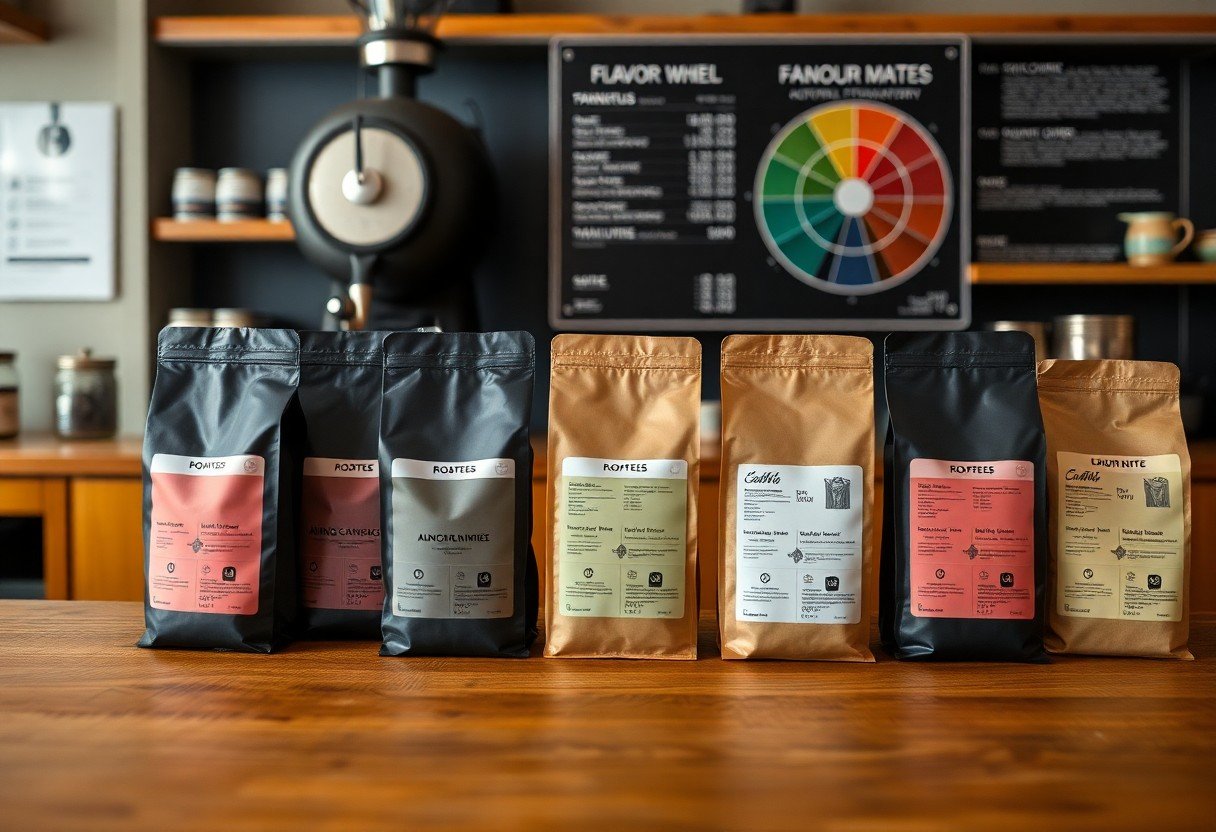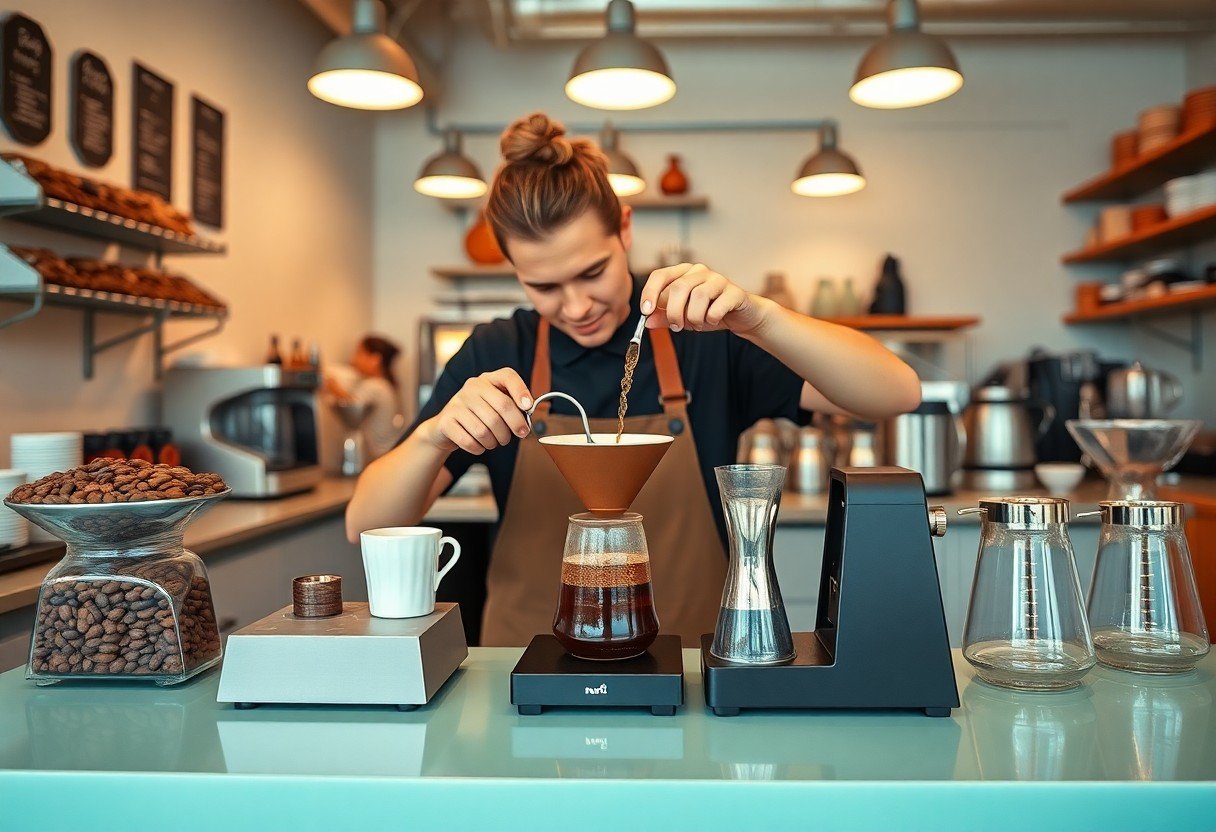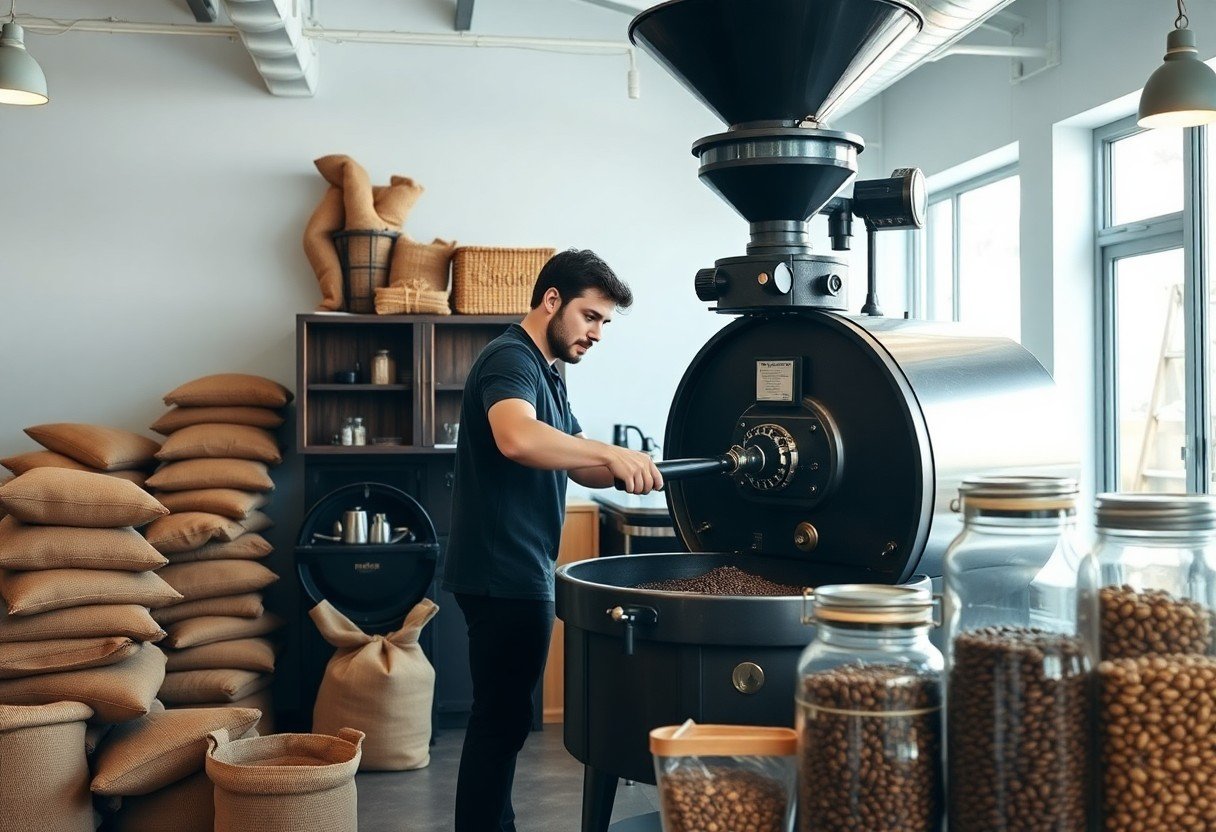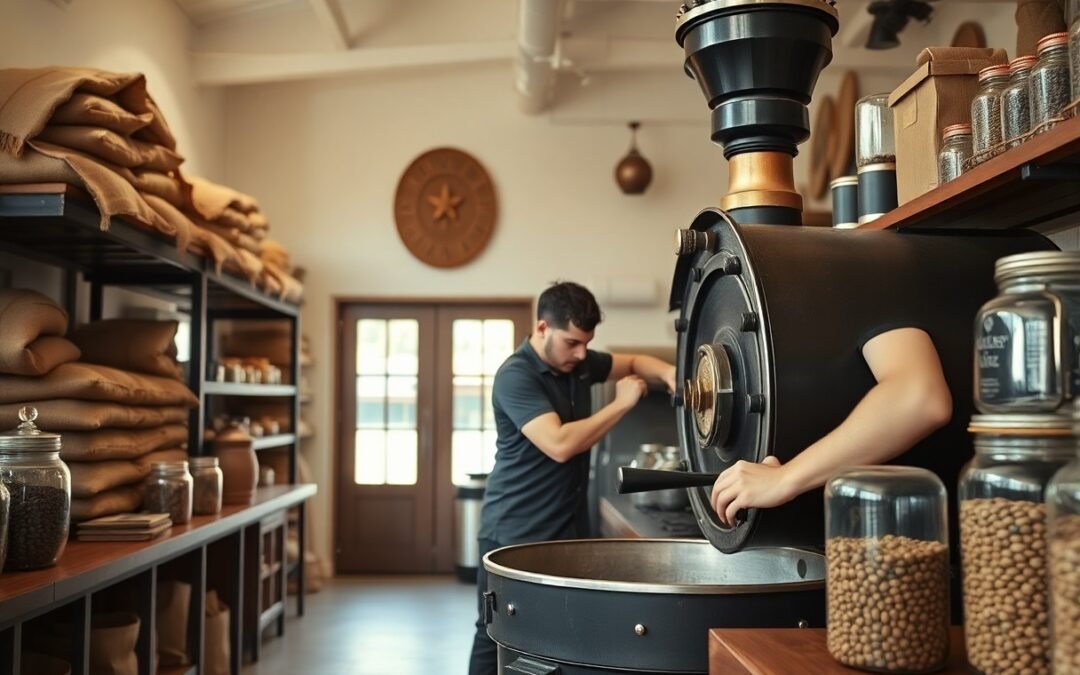With the rise of coffee culture in Australia, visiting a coffee roastery can greatly enhance your appreciation for this beloved beverage. Understanding the key factors that contribute to a unique roasting experience will help you make informed choices and elevate your tasting journey. From the sourcing of beans to roasting techniques and the importance of sustainability, knowing what to look for will enrich your visit and deepen your connection to the coffee world.

The Art of Coffee Selection
Sourcing and Quality of Beans
Sourcing high-quality coffee beans directly impacts the final cup. Roasteries often engage in direct trade or work with trusted importers to ensure that they receive beans from reputable farms that prioritize sustainable practices. When you visit a roastery, inquire about their sourcing practices. Some roasters may showcase beans from specific farms, highlighting unique qualities and flavor profiles. This engagement provides insight into how your coffee is connected to the farmers, enhancing your appreciation for each sip.
Look for information about certifications, such as Fair Trade or Rainforest Alliance, which can be key indicators of ethical sourcing. Understanding the grading system of coffee beans, like Specialty Coffee Association standards, helps you discern quality levels. Roasters that focus on high-scoring beans typically offer a more vibrant and nuanced taste, making your coffee experience far richer.
Influence of Region and Terroir
The region where coffee is grown significantly shapes its flavor profile, largely due to the concept of terroir. Varied geographical factors, such as altitude, soil composition, and climate conditions, contribute to the characteristics of the beans. For example, Ethiopian coffees are renowned for their fruity and floral notes, while Colombian coffees often showcase a balanced and nutty flavor. Engaging with a roastery allows you to explore these regional distinctions and how they manifest in roasting and preparation, enhancing your coffee journey.
In Australia, you might encounter blends that celebrate different origins or single-origin offerings that highlight a specific locale’s unique attributes. Ask your barista or roaster about the growing conditions and processing methods of the beans they use, as these details will deepen your understanding of how each cup encapsulates the essence of its origin.
Roasting Techniques: A Complex Craft
Light vs. Dark Roasting Profiles
Light roasts are often characterized by a notable acidity and bright flavors, highlighting the unique characteristics of the bean’s origin. You may notice notes like floral, fruity, or even herbal, making these roasts ideal for appreciating the subtleties of high-quality beans. Roasteries that focus on light roasting often prioritize freshness and the origins, showcasing beans sourced from specific regions with distinct flavor profiles.
Conversely, dark roasts produce bolder, deeper flavors with a reduction in acidity, creating a fuller-bodied cup. The roasting process caramelizes the sugars within the beans, leading to notes of chocolate, nuts, and even smokiness. If you prefer a rich, robust coffee experience, exploring dark roasts could be appealing, as they often offer a comforting familiarity in taste.
The Impact of Roast Time and Temperature
Roast time and temperature directly influence the final flavor of your coffee. Longer roasting times at higher temperatures tend to produce oils on the bean’s surface, creating that glossy appearance in dark roasts. Those light-roast aficionados may appreciate a faster roast that preserves the bean’s inherent qualities, with a typical temperature range from 180°C to 205°C (356°F to 401°F) for light roasts, while dark roasts push beyond 220°C (428°F).
This delicate balance can dramatically alter the flavor spectrum. For instance, shorter roast durations can preserve acids and fruitiness, which is why some specialty coffee drinkers favor the bright notes of lighter roasts, while longer roasts may introduce a more unified flavor profile that masks the origins for a more homogeneous taste.
Roast Time vs. Flavor Characteristics
| Light Roast | Bright acidity, floral notes |
| Medium Roast | Balanced flavor, mild acidity |
| Dark Roast | Full-bodied, notes of chocolate and caramel |
Influence of Temperature on Roast
| Light Roast Temperature | 180°C to 205°C (356°F to 401°F) |
| Dark Roast Temperature | 220°C and above (428°F and higher) |
The relationship between roast time and temperature is a dynamic dance that impacts not only taste but also aroma. Higher temperatures can lead to the development of bitter compounds if not carefully monitored. A well-timed roast captures the essence of the bean, while a poorly timed roast may miss the mark, leading to a flat or overly bitter cup. Engaging in discussions with roasters about their specific processes reveals the art and science behind achieving the perfect roast.

Brewing Methods: Exploring Flavor Extraction
Brewing methods significantly influence how the unique flavors of coffee beans are extracted, impacting your overall experience. Whether you choose espresso, pour over, or French press, each technique highlights different elements of the coffee’s profile. Espresso uses high pressure and a quick extraction time, resulting in a concentrated flavor with rich, textured crema, making it ideal for robust coffee lovers. On the other hand, pour over allows for a more controlled brewing process, extracting nuanced flavors through a methodical infusion, which can reveal the bean’s delicate acidity and sweetness. Understanding these differences will help you appreciate the unique characteristics that each method produces.
Various Brewing Techniques (Espresso, Pour Over, etc.)
Each brewing technique unlocks a distinct flavor profile that can transform your cup of coffee into a unique experience. For instance, a Chemex pour-over enables a smoother, cleaner taste due to its thick paper filters, which absorb oils and sediments that other methods, like French press, might emphasize. Alternatively, the rich, complex flavors drawn out by a cold brew process can result in a refreshing, low-acidity beverage that appeals to those seeking a different take on their coffee routine. Experimenting with these varying methods can deepen your understanding of how brewing alters the final taste of your cup.
Equipment Quality and Its Role in Taste
Quality equipment is necessary for showcasing the best characteristics of your coffee. Investing in a high-quality grinder, for instance, can dramatically affect the extraction process. A burr grinder offers a consistent grind size, crucial for methods like espresso, where uneven particle size can lead to over or under-extraction. Additionally, precision in water temperature and brewing time is vital; high-end machines often provide the necessary controls to achieve optimal brewing conditions. This attention to detail ensures that every nuance of the coffee’s flavor is presented to its fullest potential.
The impact of equipment quality extends beyond just the brewing process; it shapes every aspect of the flavor profile you experience. A well-calibrated espresso machine maintains consistent pressure, resulting in a shot that balances sweetness, acidity, and bitterness exquisitely. Conversely, lower-end equipment might produce an imbalanced cup that could mask the intricate flavors inherent in high-quality beans. By choosing reliable, well-crafted tools, you can elevate your coffee experience and unlock the full range of flavors that artisanal roasteries aim to highlight.
The Experience and Atmosphere of a Roastery
Visiting a coffee roastery goes beyond simply enjoying a cup of coffee; it immerses you in a unique ambiance that reflects the roastery’s identity and craft. The experience often starts from the moment you step inside. You may notice the rich aromas of freshly roasted beans filling the air, with soundscapes that range from the rhythmic clattering of equipment to soft conversations among patrons. A well-designed space can enhance your visit; lighting, decor, and seating arrangements contribute significantly to the overall vibe, making it a place not just to sip coffee, but to connect.
Factors Influencing Ambiance
Several elements shape the ambiance of a coffee roastery. The architectural design can create either a cozy, intimate setting or an open, vibrant environment. Natural light versus artificial lighting can evoke different moods, as can the choice of music, whether it be jazz, indie, or no music at all, allowing for a personal space in which to enjoy your favorite brew. Materials used in furniture and decor play a role as well; wood and textiles can add warmth, while modern elements might lend a sleek, industrial feel.
- Architecture and layout of the space
- Lighting, both natural and artificial
- Sound design, including music and background noise
- Furniture choices and materials
After experiencing these factors, you’ll appreciate how they come together to create a welcoming environment that invites you to linger and savor your coffee.
Importance of Community Engagement
A thriving coffee roastery often places a strong emphasis on community connection, which can significantly enhance your visit. Regular events like coffee tastings, workshops, and local art showcases not only build a sense of belonging but also elevate your understanding of coffee culture. Engaging with local farmers and suppliers fosters transparency and sustainability within the coffee industry, allowing you to feel more connected to the origin of your brew.
Many roasteries actively participate in community outreach through collaborations with local businesses and initiatives. This not only strengthens ties but also promotes a culture of sharing and appreciating local talent, from artists to bakers. As you enjoy your coffee, you may encounter a vibrant community atmosphere that inspires you to return, not just for the coffee, but for the connections and experiences it fosters.

Sustainability Practices in Coffee Roasting
Ethical Sourcing and Fair Trade Certifications
Understanding the journey of your coffee, from bean to cup, is crucial in discerning its ethical implications. You should look for roasteries that prioritize partnerships with coffee farmers who practice sustainable agriculture. Fair Trade certifications are a key indicator of this ethical commitment, ensuring farmers receive fair compensation and work under humane conditions. Roasteries showcasing these certifications often provide traceability, allowing you to know exactly where your coffee originates. This transparency fosters trust and supports the livelihoods of growers, contributing to a more equitable coffee industry. For further insights, check out Australian Coffee Culture Explained.
Engaging with roasteries that promote ethical sourcing means you align yourself with brands committed to long-term sustainability. You might find that many roasters not only source beans from Fair Trade certified farms but also support organic farming practices that avoid synthetic pesticides and fertilizers. This direct support of sustainable farming efforts contributes to the preservation of ecosystems and biodiversity in coffee-growing regions.
Environmental Impact and Waste Reduction
Your choice of coffee roastery can significantly affect the environment. Many roasteries today implement practices that minimize their carbon footprint. For example, energy-efficient roasting machines reduce energy consumption during the roasting process. Additionally, some roasteries employ renewable energy sources, such as solar or wind power, contributing to a decrease in reliance on fossil fuels. By selecting roasteries that are conscious of their environmental impact, you support efforts to combat climate change while enjoying your coffee.
Waste reduction strategies also play a vital role in sustainability. Many roasteries are adopting zero-waste practices, which involve repurposing coffee grounds for compost or other uses. In some cases, spent coffee grounds can be transformed into organic fertilizers or even utilized in skincare products. These innovative approaches not only reduce waste but also enhance the overall sustainability profile of the coffee industry.
Summing up
Conclusively, when visiting an Australian coffee roastery, you should prioritize factors such as the quality of beans, roasting techniques, and the expertise of the baristas. Understanding the origin of the coffee beans can greatly enhance your appreciation for the flavors and aromas. Selecting a roastery that values sustainable sourcing not only supports ethical practices but also often results in higher-quality coffee.
Additionally, take into account the ambiance of the roastery and the available tasting options. A welcoming environment can significantly enhance your overall experience. Engaging in cupping sessions or guided tastings allows you to deepen your knowledge and refine your palate. By keeping these factors in mind, you can ensure that your visit to an Australian coffee roastery is enjoyable and enriching.
FAQ
Q: What should I look for in coffee bean quality at a roastery?
A: Look for beans that are freshly roasted, preferably within the last couple of weeks. Check for sound sourcing practices, and ask about the origin of the beans to ensure quality and sustainability.
Q: How do different roast levels affect the coffee flavor?
A: Light roasts tend to have brighter acidity and fruity notes, while medium roasts balance sweetness and acidity. Dark roasts provide bolder flavors with a smoky or bitter profile. Understanding these differences can enhance your tasting experience.
Q: What role does the roasting equipment play in the coffee quality?
A: The type of roasting equipment can impact the consistency and flavor extraction of the coffee. Specialty roasters often use high-quality equipment capable of controlling temperature and airflow, which influences the final product’s taste.
Q: How important is the brewing method used at a roastery?
A: The brewing method can significantly affect the coffee’s flavor profile. Different methods, such as pour-over, espresso, or cold brew, highlight various characteristics of the coffee, providing a unique experience based on the method chosen.
Q: Can I learn about coffee preparation techniques at a roastery?
A: Many roasteries offer workshops or tastings where you can learn about various coffee preparation techniques. Engaging with knowledgeable staff can enhance your skills and deepen your appreciation for coffee.

